The contract that Sean Holiday’s ancestors signed with the Washington government more than 150 years ago is obscure.
But on June 1, 1868, when at Fort Sumner 29 Navajo chiefs and 10 American cavalry officers signed the treaty that would end the expulsion of the Navajos and guarantee them a permanent home on their ancestral lands, leaders of the largest tribe of Native Americans. They do not mind that the water in the reserve may become scarce.
“It was very different here.” Sean Holiday makes a sweeping hand gesture. Holiday is a young Navajo guide who wants to take us to the famous Monument Valley before sunrise.
legend:
For Sean Holiday, things looked very different in Monument Valley some time ago.
SRF
A natural wonder high on a plateau between Arizona and Utah where the Navajo settled for centuries and which later became the backdrop for countless Hollywood movies and cigarette advertisements. “The water was so high that when it rained, everything here turned into a swamp.”
drought for 30 years
Today, there are no more swamps in Monument Valley. Drought follows drought, and there is an official shortage of water in nearby rivers and lakes.
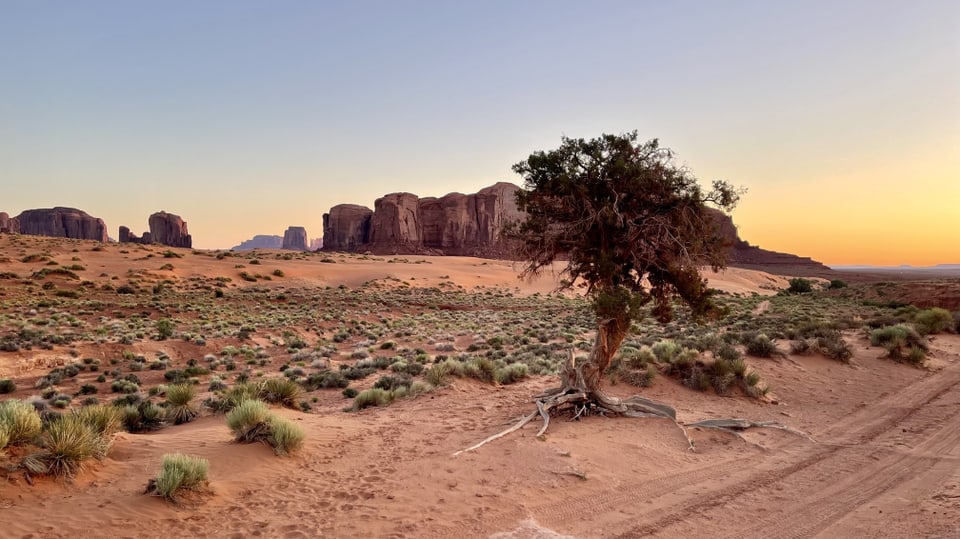
legend:
Monument Valley is in danger of drying out.
SRF
The Little Colorado River has been transporting less water each year for the past 30 years. Lake Powell over the Grand Canyon or Lake Mead near Las Vegas are at historic lows.
Sean Holiday sighs: “Many of the springs here are drying up, and the water levels are dropping. That means we have less and less water that we can pump.”
The lawsuit was dismissed
With the treaty that the Navajo signed with the United States government in Washington, the Navajos gave up their resistance to the white settlers. The government, in turn, guaranteed the Navajos a permanent home of their own on the reservation, in a “viable” area.
But with the water supply constantly declining, the question arises of what that means today.
The Navajos demand that the United States government ensure adequate water supply for the reservation in the future and are suing the Supreme Court in Washington.
But in his latest ruling, he stated in inappropriate legal language: “The Treaty of 1868 Establishing the Navajo Reservation retains the waters necessary to fulfill the purpose of the Navajo Reservation. But it does not require the United States to take affirmative action to secure water for the tribe.”
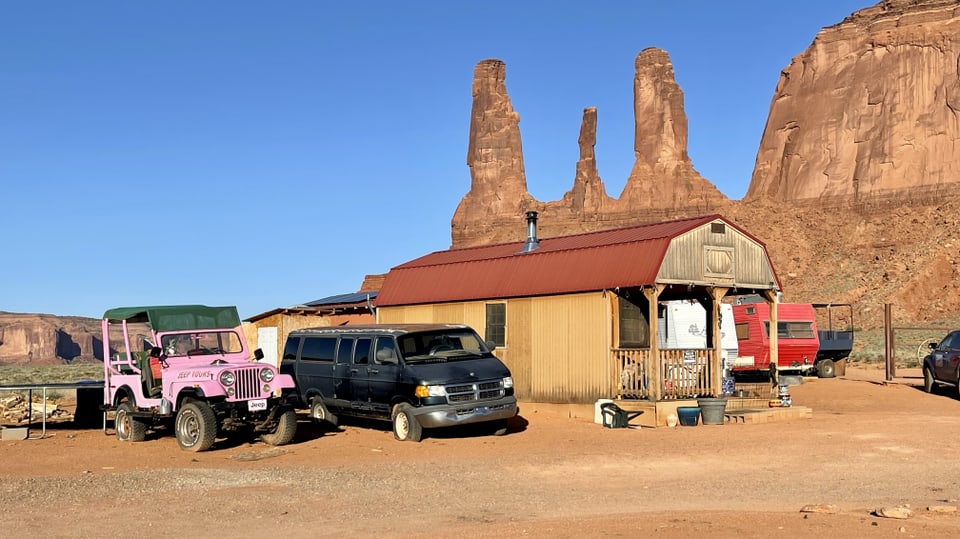
legend:
Eight families currently live in Monument Valley.
SRF
For Sean Holiday, this is an attempt by the government in Washington to evade the responsibility the United States had for the former owners of this land: “When we made the treaties with the United States, we got enough water to come out here to live. But they don’t abide by the contract.”
Nowhere
The dispute over water on Navajo land shows how many unresolved questions from America’s past remain.
In its ruling, the Supreme Court expressly resists the manipulation of past contracts of the United States with the former owners of this country: “Such a court [im Fall der Nation der Choctaw gegen die Vereinigten Staaten] I decided, the Indian treaties could not be rewritten or extended beyond the clear terms.”
Looks like we’re still searching for where we belong.
The US Supreme Court does not deny that the Navajo need adequate water. But he does not hold the United States responsible.
For Sean Holiday, this argument doesn’t work: «It’s like there’s no place for us. Even if we own the land, we have our culture and our history, it is as if we are still searching for where we belong and where we belong.”
“Am I American?”
Sean Holiday leads us to a cavernous rock formation and lies on his back. “If you look closely, you can see an eagle’s eye there.” In fact, a crater high in the rocks could be seen. “And around it, it looks like feathers.”
Sean pulls out the flute. It inevitably threatens to turn cheesy, but Sean’s words instantly counteract it. “Do I feel like I’m part of the modern United States of America?” Shawn paused. Sean replied, “Yes and no at the same time.” Of course, they are all natives of Navajo, USA. They paid taxes and had freedom of choice.
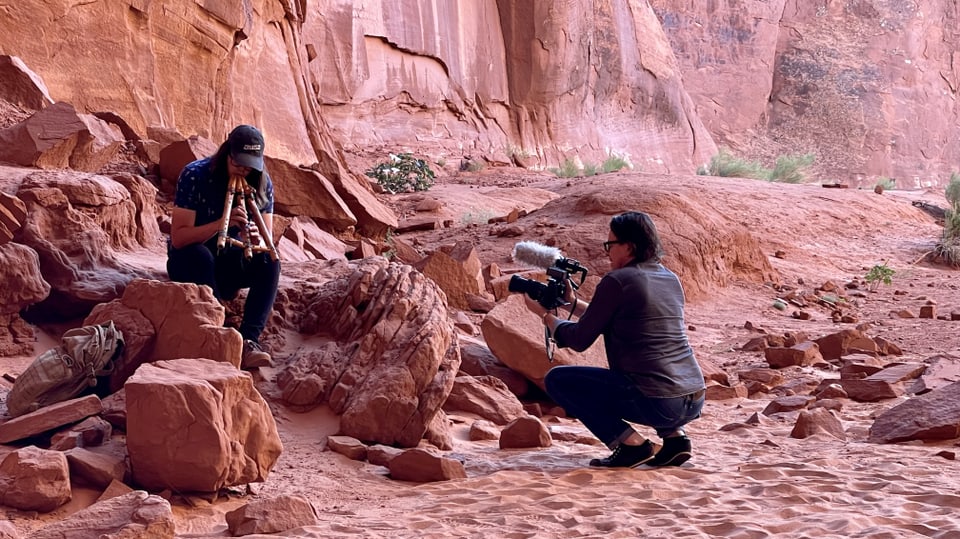
legend:
Playing the flute, as practiced by Sean Holiday, often has ritual significance in Navajo culture.
SRF
Sean adds that many policy decisions favor the state far more than it does. This is why we natives always feel a little left out. Of course it’s a process, but until it’s complete I don’t really feel like a full-fledged American.”
Wall paintings of primitive peoples
The Navajos, and before that the Anasazi peoples, have lived in this area between Arizona and Utah for thousands of years. Shaun’s father, Gary Holiday, and his friend, Will Cowboy, take us to a valley they call “Mystery Valley.”
No one knows exactly how old the paintings on the red rock walls are. They show hands or animals. The first people reached this high plateau more than 1000 years before our era.
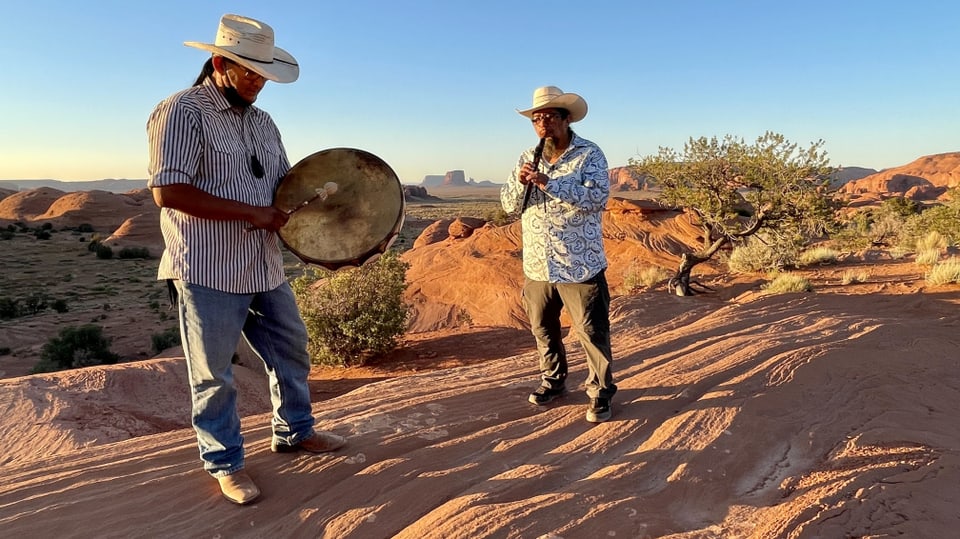
legend:
Will Cowboy (left) and Garry Holiday: The Navajo call Monument Valley “Tse’Bii’Ndzisgaii” – “the valley in the rocks” or “the place where the rocks end.”
SRF
This is another reason why Gary Holiday did not understand the Supreme Court’s decision in Washington not to grant the Navajo any special water rights: “We were the first Americans. We must have our own water, here and in every other area where we have always lived.”
“The place where the rocks end”
Gary Holiday and Will Cowboy lead us deeper and deeper into a maze of barren canyons and impressive rock formations. “We are not ungrateful to the United States! We value the rule of law and the freedom it gives us,” says Gary.
But even with him, the big “but” actually lies behind the following sentence: “When strangers come and make laws that restrict our right to water, it makes us sad. It saddens us that the whole world has free access to water, but that freedom is not given to the indigenous people.” .
Anasazi has suddenly disappeared from Monument Valley. No one knows why, but there is a theory that a natural disaster led to severe water shortages. Today’s Navajo call Monument Valley “the place where the rocks end.” They don’t want that to be where their story ends.

“Tv expert. Hardcore creator. Extreme music fan. Lifelong twitter geek. Certified travel enthusiast. Baconaholic. Pop culture nerd. Reader. Freelance student.”

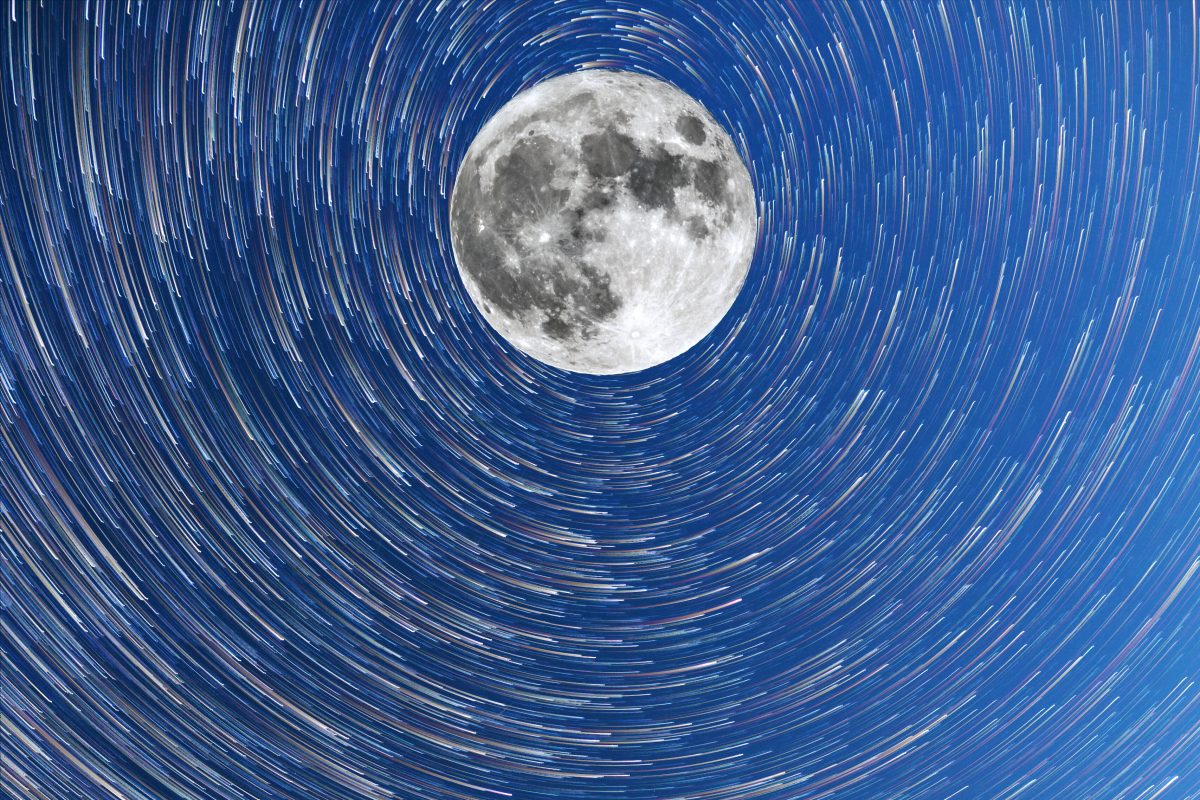




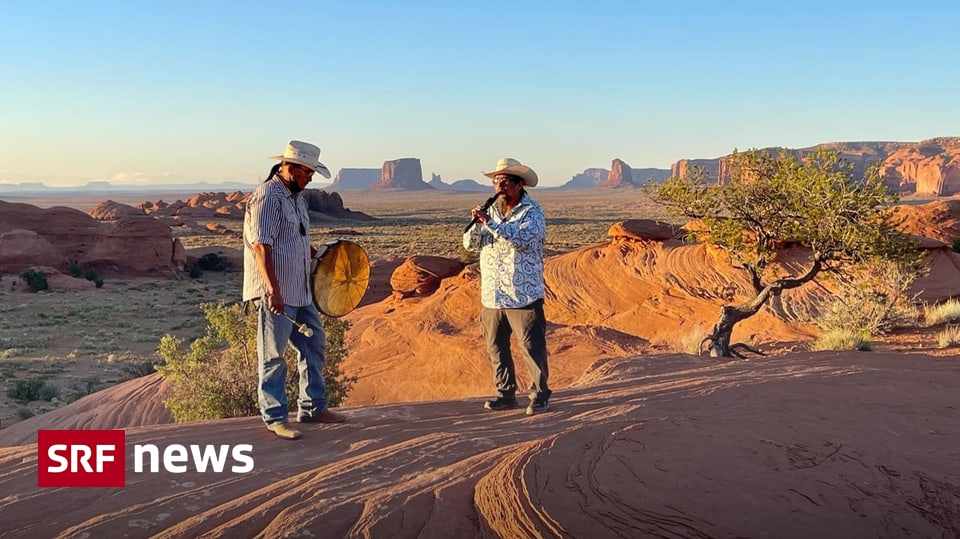
More Stories
Atletico wins the “final” for fourth place – racism against Neco Williams
“Signs of spiders on Mars”
The Galeria Karstadt Kaufhof branch on Limbecker Platz will likely close